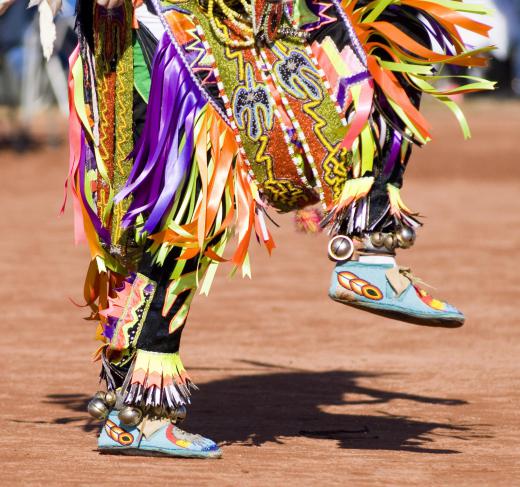At UnitedStatesNow, we're committed to delivering accurate, trustworthy information. Our expert-authored content is rigorously fact-checked and sourced from credible authorities. Discover how we uphold the highest standards in providing you with reliable knowledge.
What are the Different Kinds of Native American Rituals?
There are a variety of different Native American rituals used by various tribes across North America. These rituals represent part of the core belief system of traditional American Indian beliefs. Though different tribes have unique ways of performing these Native American rituals, most maintain a certain level of similarities in these practices.
Common tools used in Native American rituals include pipes for tobacco use, drums and flutes. In the past, these were generally all handmade and helped accent the various practices. Today, many are mass-produced, but most tribes still manufacture their own for use in ceremonial practices.

The art of smudging is commonplace in many of the rituals. Bundles of herbs such as white sage are dried for the purpose of burning. They are commonly used for purification ceremonies. Essentially, the burning sage acts as a form of incense, releasing a pleasant odor.
Another common element to many American Indian ceremonies is the use of peyote, a spineless cactus that produces psychotropic effects. Many American Indians practice religious ceremonies with peyote, especially in what is known as the Native American Church. Despite the fact that peyote is considered a controlled substance by the US federal government, the Supreme Court has authorized its use in Native American rituals.

One ritual which Native Americans practice is the rite of passage. This involves a series of ceremonies that celebrate milestones in the lives of tribal members. These rite of passage ceremonies can be conducted on an individual basis or as a tribal event. Generally, these rituals are involved in the passage to adulthood, marriage and death.
Having its origins in a religious movement of the late 1800s, the Ghost Dance was a practice used by many US Native Americans throughout the West. It signifies different aspects of Native American spirituality, most notably the push for clean living amongst tribes and an end to expansionism by white Americans. The Ghost Dance was used during the circle dance, a practice in which members of the tribe would dance in circles.

Similar to the Ghost Dance, rain dances were conducted across much of the continent by the indigenous peoples of North America. The purpose was to cause precipitation during dry times as well as remove evil spirits from the area. For example, the Cherokee believed that the rain that came from the dance was caused by former chiefs of the tribe. Often feathers and the color turquoise were used to help stimulate the rain to fall.

Another famous dance used in Native American rituals is the Sun Dance. This is practiced by many tribes in both the US and Canada, but primarily among the Plains Native American nations. While each tribe has distinct ways of conducting the Sun Dance, familiar features among most tribes are the practice of dancing with drums, fasting, and piercing various sections of skin.
AS FEATURED ON:
AS FEATURED ON:














Discussion Comments
However, once barriers begin to break, it's easier for us to embrace culture(s) with open arms. Even if we're not fond of one's way of doing things, we should still do our best to show respect. After all, we'd want others to respect our culture(s), right? For a fantastic look at other regions, watch the show Bizarre Foods with Andrew Zimmern. It airs on the Travel Channel. Trust me, you won't be disappointed.
Why is it that so many Americans look down on other cultures? I'm not trying to generalize, but a lot of the time, it seems like they're not willing to embrace those who are different, preferring to stay in their comfort zone instead.
Post your comments